
SALE OF PUPPIES AND KITTENS : New regulations
LAW REGLEMNTATION SALE SALE PUPPY KITTEN BRITAIN
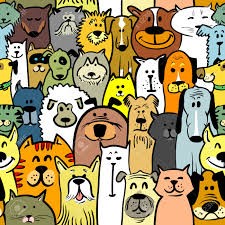 |
SALE OF PUPPIES AND KITTENS : New regulations from the 1ER January 2016 (order of 07/10/2015) |

 |
SALE OF PUPPIES AND KITTENS : New regulations from the 1ER January 2016 (order of 07/10/2015) |
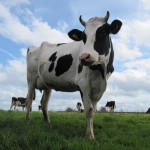
The gastrointestinal parasitism in cattle, must during grazing, must be controlled to limit its impact on the profitability of livestock farming.
During this fall, we conducted an action of collection of milk samples in 93 farms in order to provide our farmers information on the parasitism of their herds. The results are divided as follows :
For comparison, Here is the breakdown of the results of the samples collected in the fall 2014 :
The interpretation of this result is to modulate :
This study reveals that, in 2015, 90 % farms have suffered a parasitic pressure which may impact performance (against 66% in 2014).
These poor results are directly correlated to the climate and the weather, but other risk factors involved (Loading plots, rotations and driving grazing, unsuitable deworming schedules, Crossed pastures ...).
Declining performance impact your economic results with several levels to :
The chart reminds the components of the economic impact of parasitism in most farms : losses relating to this position are often higher than the costs incurred.
The team from the veterinary clinic Kreiz Breizh is engaged in a preventive approach and offers services tailored to the farmer wishing to improve productivity and profitability.
Speakers at a farm, Our priority is to reduce the shortfall.
Indeed, Animal Health, reducing losses is much greater leverage cost reduction.
As of parasitism, the aim of the breeder should be to maintain the balance between the animals and their parasites at a reasonable cost. The following recommendations are fundamental :
For information, vermifuger a herd of 70 dairy cows with a product For You (= To be used on the back) from 5 liters costs 540 € EXCL. VAT (in our structure).
The question that the breeder wanting to be profitable should ask is: The treatment I administered it is used wisely?
Indeed treat the flock without knowing its parasitic status can be risky:
some herds do not require pest control, then it is unnecessary to spend that amount.
Conversely invest in a good treatment for an excessively noisy flock is clearly a profitable act.
Hence the importance of taking stock of the parasitic status of their livestock.
To view our services' management of parasitism ", Click here.
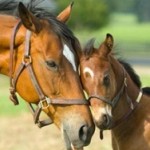
The end of the year is a period hinge in the management of your horses parasitism. Indeed, parasites, unwelcome guests of your animals, laid ; the pastures are contaminated eggs or larvae and horses réinfestent as and when they eat.
When mentioning the management of parasitism, often summarizes this action to the single deworming. However, the systematic and improper deworming use inevitably leads to the loss of efficiency of the latter with the appearance of resistant pest populations. Some countries around the world already face resistant populations of worms.
Veterinary Clinic team proposes to improve the practices of deworming in agreement with the new field data and new scientific advances :
1/ The use of wormers must be made in a reasoned way, following the creation of a FECAL *. to check for the presence of such and such parasite. Thus, It reduces the number of annually given de-worming, and left to live a "refuge" of parasites which will remain susceptible population wormers. Furthermore, from a budgetary point of view, the economy made in purchase of Wormer will largely cover the costs of fecal.
2/ Other forms of struggle are to be adopted :
|
The FECAL, What is it, What's the point ? It is one simple method, fast and inexpensive which allows you to have a photograph at a given moment of the parasitic status of your horse. It is a microscopic analysis from fresh droppings (picked up cleanly without soil/debris and immediately after defecation) and sent within 24 hours to the clinic. The interests :
We are looking for :
The conclusions :
The limits of this analysis :
|
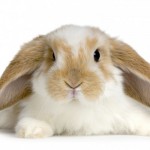
. The rabbit is an animal domesticated from more of 1000 years. The weight of a pet rabbit varies between 800g and 1,9 kg. Its life expectancy is 5 to 10 years, sometimes more, up to 14-15 years for some lucky!
.
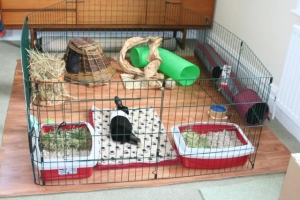 The rabbit can live alone or in a group, in an enclosure or a large cage, probation in the home or. The cage litter consists of hay or good quality litter. The soil must must not be too slippery: litter, or carpet, carpet, allow of not to damage tabs.
The rabbit can live alone or in a group, in an enclosure or a large cage, probation in the home or. The cage litter consists of hay or good quality litter. The soil must must not be too slippery: litter, or carpet, carpet, allow of not to damage tabs.
If he lives in a cage, it is advisable to bring it out as often as possible. A rabbit has to run , jump, play at least 3 hours per day. This way you avoid obesity and you participate in his mental well-being and preventing diseases caused by confinement in a cage. This also allows better socialization. Exercise is also very good for sufferers of urinary pathologies rabbits.

 Very many scientific studies have proven the benefits of pets to humans…
Very many scientific studies have proven the benefits of pets to humans…
In the proper sense, as in the figurative sense because our small protected decrease our risk of developing cardiovascular disease :